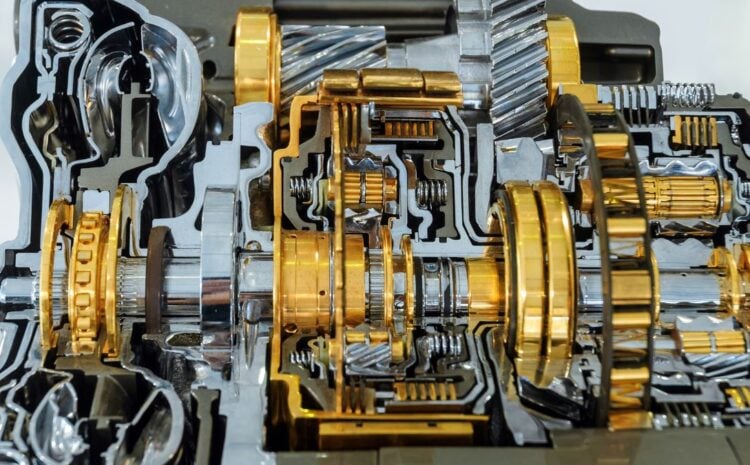Twin screw extruders have carved a niche in various industries, prominently in processing plastics, rubber, and food products. Central to the robust functioning of twin screw extruders is the screw extruder gearbox. This gearbox, designed for high efficiency, governs the extrusion process, ensuring that the rotating screws operate with synchronization and high speed. Today, we will explore what a twin screw extruder gearbox is, its functions, and the key features that make it an essential part of the extrusion process.
Functions of the Twin Screw Extruder Gearbox:
A. Power Transmission
The primary role of the gearbox is to facilitate power transfer from the motor directly to the extruder screws. Doing so guarantees that these screws maintain a high efficiency in their rotations, which is vital for effective extrusion.
B. Speed and Torque Control
Beyond mere rotations, the gearbox is intricately designed to regulate the speed of the screw rotations, ensuring they are ideal for the extrusion process. Additionally, it manages the high torques, which are paramount when processing a wide range of materials, from rigid plastics to more malleable substances.
C. Synchronization
A twin screw extruder’s efficiency is not just in its speed but also in the harmony of its screw rotations. The gearbox ensures that the screws operate in perfect synchrony. This smooth and synchronized operation is crucial for producing consistent and uniform products during extrusion runs.
D. Optimized Output
The gearbox is not just a mediator but an enhancer. With its ability to produce high torque output, it ensures that the extrusion process is not only smooth but also maximized in terms of efficiency. This results in high-quality material processing, making the most out of every rotation and material input.
Characteristics Defining a Twin Screw Extruder Gearbox
A. High Torque Capacity
The gearbox is robustly engineered to cater to the rigorous demands of the extrusion process. This high torque capacity makes it versatile enough to be compatible with single-screw extruder systems and more complex twin-screw extruders. The design efficiently transforms the input energy into the desired operational force.
B. Compact Build
Despite its capability, the twin screw extruder gearbox boasts a compact structure. This streamlined design makes it adaptable, allowing for straightforward integration into various extruder systems, ensuring a space-efficient setup.
C. Precision in Gear Ratios
One of the hallmarks of this gearbox is its precision in gear manufacturing. By maintaining exact gear ratios, it offers impeccable control over the speed of the screw rotations, ensuring the extrusion process remains consistent and efficient.
D. Durable Construction
It’s not just about performance; longevity matters too. The twin screw extruder gearbox is constructed with durability in mind. Its materials and build quality are intended to shoulder heavy operational loads and withstand challenging operational environments, ensuring a prolonged service life.
E. Cooling Efficiency
Continuous operations often lead to heat generation, which can compromise efficiency. However, this gearbox comes with an integrated and efficient cooling system. This feature plays a pivotal role in dissipating the heat accrued during operations, maintaining consistent performance, and preventing potential wear and tear.
Classifications of the Twin Screw Extruder Gearbox
A. Parallel Shaft Gearbox
Incorporating two splined shafts parallel to each other, it’s best suited for applications demanding high torque and lower speeds. This model prides itself on superior power transmission efficiency.
B. Co-rotating Gearbox
Tailored for twin screw extruders, where the screw elements rotate in the same direction. It ensures synchronized and balanced screw rotations, providing meticulous control over speed and torque.
C. Counter-rotating Gearbox
A design reserved for extruders with screws spinning in contrasting directions, its forte lies in offering unparalleled mixing and kneading abilities. This flexibility allows it to handle various materials with different barrels and screws.
Factors for Selecting the Perfect Gearbox
A. Torque Consideration
It’s crucial to determine the maximum torque the gearbox can handle. This involves evaluating the properties of the processed materials and the conditions under which the extrusion will occur. Ensuring the selected gearbox can consistently deliver, especially when working under high torques, is vital to maintaining operational efficiency.
B. Gear Ratio Precision
The extrusion process’s effectiveness hinges on the gear ratio’s accuracy. The right balance must be struck to ensure that the screw shaft operates at its optimal speed, translating to the desired output. It’s imperative to align this ratio with the materials’ nature and the extrusion process’s unique requirements for peak performance.
C. Cooling Mechanics
Continuous operations generate heat, which can impact the performance and lifespan of the gearbox. Therefore, an efficient cooling system is paramount. The gearbox’s longevity and optimal functioning depend greatly on the capacity and overall efficiency of the cooling system. It’s essential to prioritize this feature to safeguard consistent operations and extend the equipment’s life.
Conclusion
Anchoring the operation of twin screw extruders, the twin screw extruder gearbox is indispensable. With its focus on energy input optimization, residence time reduction, and precise screw rotations, this device has become the backbone of the extrusion process. While investing, considering attributes like torque capacity, gear ratio, and cooling methodologies can significantly amplify the overall efficiency and lifespan of the extruder gear apparatus.



